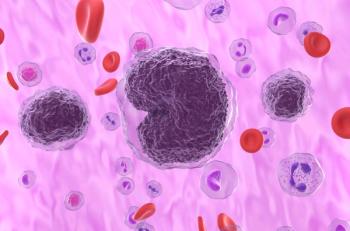
Researchers Identify and Silence Long Noncoding RNA Responsible for HIV Replication
According to the researchers, the long noncoding RNA, when turned off or deleted, eliminates dormant HIV reservoirs that persist even when patients adhere here to their antiretroviral therapy regimen and are virally suppressed.
Researchers from the University of California San Diego School of Medicine say they have identified a principal cellular player controlling HIV reproduction in immune cells by using genetic sequencing.
According to the researchers, the long noncoding RNA, when turned off or deleted, eliminates dormant HIV reservoirs that persist even when patients adhere here to their antiretroviral therapy (ART) regimen and are virally suppressed.
“This is one of the key switches that the HIV field has been searching for three decades to find,” said Tariq Rana, PhD, professor of pediatrics and genetics at the university,
Rana and colleagues used a combination of genomic, biochemical, and cellular approaches, discovering that silencing the single long noncoding RNA that they called HIV-1 enhanced lncRNA (HEAL), or removing it by using CRISPR, prevented HIV from recurring when ART was stopped. Typically, when ART is stopped, the virus awakens and a patient becomes unsuppressed.
“Our results suggest that HEAL plays a critical role in HIV pathogenesis,” said Rana.
HEAL, which is elevated in people with HIV, is conserved only in chimpanzees and rhesus monkeys, “suggesting that it is a recently emerged gene.”
According to the researchers, the gene regulates HIV replication in immune cells, such as macrophages, microglia, and T cells, by forming an RNA-protein complex with RNA-binding protein FUS, which is specifically enriched at the promoter of the cyclin-dependent kinase 2 gene, or CDK2, thus allowing the gene to regulate CDK2 expression in T cells.
This is the first genome-wide expression analysis of long noncoding RNA in HIV-infected macrophages—the immune cells that promote tissue inflammation, stimulate the immune system, and rid the body of foreign agents, they said.
They added that more research is needed to explain the precise signaling mechanism that produces HEAL expression once a patient is infected by HIV, as well as how its expression is restricted during viral latency.
Reference:
Chao T, Zhang Q, Li Z, et al. The long noncoding RNA HEAL regulates HIV-1 replication through epigenetic regulation of the HIV-1 promoter [published online September 24, 2019]. mBio. doi: 10.1128/mBio.02016-19.
Newsletter
Stay ahead of policy, cost, and value—subscribe to AJMC for expert insights at the intersection of clinical care and health economics.













































